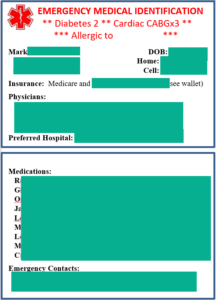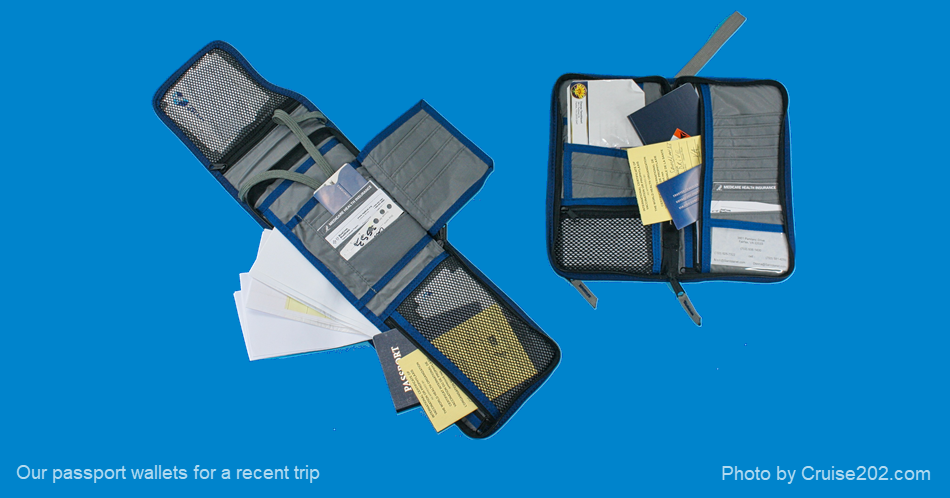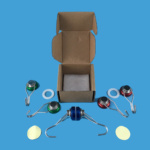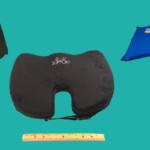(Updated on December 11, 2019)
Anyone who has traveled knows how important it is to have your documents organized and easy to access. However, in the midst of all the frantic last-minute preparations, it is easy to forget something. I have had my share of forgetful moments, including a time I forgot to take my wallet to the airport and had to go home to retrieve it. Depending on your destination and complexity of your travel, the documents you need to carry may vary. I use a checklist to make sure I do not forget any my documents and I keep my documents stored in a document wallet in preparation for travel. That way I only need to make sure I have packed the document wallet. The list below was developed based on what I have taken on my past few trips.
Essential documents
I consider the following document essential and make sure they are packed in our document wallets as early as possible, but no later than a week prior to travel, with the exception of the boarding passes which cannot be printed until the day before.
1. Passport with appropriate Visas
Unless you are taking a Hawaiian Island cruise on Norwegian or an American river cruise, you will be traveling to a foreign country. This requires you to have a valid passport. In many instances a “valid” passport is one that expires at least 6 months after the end of your travel AND has at least five blank pages. If you travel a lot, make sure you get the 52-page passport when you renew (no extra charge) so that you do not run out of pages. Unfortunately, passport agents like to stamp on a blank page, so you will quickly run out of blank pages. As an extra precaution, make a photocopy of your passport and keep it separate from the passport, in case your passport is lost or stolen. Always check the documentation requirements at each port you visit – the cruise line will notify you in their daily newsletter or port guide about such requirements. Do not ignore what they say! You may not need to carry your passport when off the ship, but that is port-specific, so be sure to verify this before departing.
 Check your visa requirements well in advance of your travel. Visas for some countries, such as China and Brazil can take some time to obtain, so don’t get caught at the last minute without one. We discovered that US citizens need a visa for Australia, which we did not have. Fortunately, the airlines were able to provide that visa at the airport. Otherwise we would have had a very disappointing trip. Depending on your country of citizenship, the requirements can change. It is essential that you check the visa requirement as you approach your departure date to ensure they have not changed. Generally, the cruise lines are pretty good about notifying you and a good agent will remind you as well.
Check your visa requirements well in advance of your travel. Visas for some countries, such as China and Brazil can take some time to obtain, so don’t get caught at the last minute without one. We discovered that US citizens need a visa for Australia, which we did not have. Fortunately, the airlines were able to provide that visa at the airport. Otherwise we would have had a very disappointing trip. Depending on your country of citizenship, the requirements can change. It is essential that you check the visa requirement as you approach your departure date to ensure they have not changed. Generally, the cruise lines are pretty good about notifying you and a good agent will remind you as well.
2. Government-issued ID
Always carry a government issued identification when you are traveling. This can be a driver’s license or similar, but must have your photo. A student ID card will not suffice. This ID serves two purposes. First, it identifies you to authorities in the event you are not carrying your passport or have a medical emergency. Second, you may need to relinquish your passport on the ship or at the hotel during your stay. In this instance, a backup ID is always handy. Most cruise ports allow you to move around with just a government ID, which is much easier to carry than a passport. However, I have visited ports that require you to carry your passport (and not just a photocopy) when you are off the ship, so make sure you know the requirements at each port.
3. Medical and Vaccination records
If you have no significant medical conditions, you can bypass this section. Since I have several medical conditions, as do many of the passengers I encounter, I carry four items on all my trips. What you need will vary depending on your medical conditions, but keep in mind that, should something occur on the ship or in one of the ports, the emergency responders may not be able to access your medical records. At the very least, I suggest you carry a list of prescription medications and you doctors contact information in case you need to refill them during your trip.
- Medical Summary. I have a printed medical summary (approximately two pages) that provides details about all my medical conditions. I keep this up-to-date for visiting doctors and have it available when I travel to ensure that I have all the information I need. I maintain this summary as a Word document and updated on a regular basis. This information can be essential during a crisis. While I don’t care my full medical summary with me at all times, is always available in my companions know where to find it. The information contained my summary includes:
- basic contact information
- medical history (I an a diabetic and have had open heart surgery)
- emergency contacts
- allergies
- doctors, hospitals, and pharmacies
- insurance policies (Medicare, medical, dental)
- prescription and non-prescription medications
- vaccines

- Wallet Card Medical Summary. This is a smaller version of my full medical summary with basic information that might be required by first responder during an emergency. It is a laminated pocket card with my medical conditions, insurance, key physicians, medications, and emergency contacts. This card is carried in my wallet. I create this medical summary using Microsoft Word and laminated using some inexpensive adhesive laminate that I found on Amazon. I update this card whenever the information on it changes. Click here to download a Microsoft PowerPoint compatible template of the card.
- Medical Bracelet. I also wear a medical bracelet that highlights my medical conditions and states more information is on the card in my wallet. I found nice bracelets on the American Medical ID website that are attractive and can be personalized with the information you need. If you have a medical condition, such as diabetes or heart disease, I highly recommend that you have a medical bracelet, necklace, or charm that can be easily identified should you have a medical emergency.

- Yellow International Certificate of Vaccination. A vaccination certificate is not required for all countries. We were required to get a yellow fever vaccination when visiting Brazil a few years ago. If this is the case for you, make sure you have the official International Certificate of Vaccination that is approved by the World Health Organization. Once you have this, I suggest carrying it on all your trips.
4, Itineraries and reservations
I carry hardcopy of all my reservations and itineraries in my document all. I have found these to be extremely helpful, especially in foreign countries where my linguistic capabilities are not adequate. Yes, I do keep electronic copies as well, but, for some reason, paper seems to carry more weight during a disagreement. Make sure that your confirmation number is printed on the documents or write them in by hand. Typical items I carry include:
- flight itineraries showing flights, times, airports, and seat assignments
- cruise itineraries that show any excursions or other items I purchased in advance
- hotel reservations with room type and record of any funds already paid
- car reservations showing the size of car reserved in any funds paid in advance
- third-party excursions with contact information, meeting locations and times, and details of the excursion you purchased
5, Boarding passes
While most airlines now support electronic boarding passes, I find it more convenient to print out my boarding pass when I check in 24 hours before the flight. I will still use electronic boarding passes if a printer is not convenient. I know this is old school, but has served me well. I always make two copies, one of which is carried by me, the other by my wife.
6, E-tickets for cruise
Nearly all cruise lines require that you bring a printed copy of your e-ticket with you. As with the boarding passes, I print two copies, giving one to my wife.
7. Insurance cards
I do travel with my wallet which has my Medicare, medical insurance, and dental insurance cards. It is important to remember that, when traveling in a foreign country, your medical insurance may not be accepted. However, it never hurts to have it with you.
8. Travel insurance policy
We always purchase travel insurance. I know that many persons think this is a waste of money, but it is essential for anyone who is getting up in age or has medical conditions. We have had to use the trip cancellation only once, but we received all her money back within two weeks. Fortunately, we have not had to use the trip interruption or medical emergency features, but rest comfortably knowing that we have coverage. I carry a hard copy of the policy summary, which is usually one or two pages. I have an electronic copy of the full policy available should I need it. It is essential that you understand how to contact the insurance company should you need to make a claim. They will have an emergency contact number that is especially useful if you have issues with your trip, such as an emergency in which you need to shorten your trip, missing a flight, delays, or a medical issue.
Other items to carry with you
In addition to the essential documents described above, there are number of other items that pack in my document wallet. While these are not officially documents, I do consider them essential when traveling on a cruise.
9. Cruise luggage tags
Every cruise line will provide you with a set of luggage tags that need to be placed on your luggage when is dropped off at the ship. Sometimes these are provided directly from the cruise line is becoming more common to print them at home. I do prep the luggage tags by applying the return address label to each one. They should already have your room number and name, but that varies with each line. I generally pack these luggage tags with my other documents and, depending on my travel arrangements, place them on that luggage at the airport or in my hotel room if staying at a hotel prior.
10. Cash
I travel with minimal cash nowadays. Most locations will take credit or debit cards, so cash has become less critical. I do split my cash into three portions. I carry a small amount ($40-60, including small bills for tipping) with me in my wallet for use during travel. The remainder I divide and put half with my documents and half with my wife’s documents. This provides some protection against theft or loss.
11. Backup credit card(s)
We always carry our primary credit which provides great travel benefits, no foreign transaction fees, and has been easy to use everywhere in our debit card which we use at ATMs for cash advances in local currency. Since we have encountered several situations where the primary credit card was not accepted, I also carry at least one backup credit card. Our primary card is a Visa, so the backup card is either my American Express or a MasterCard. On only one instance have we needed to resort to using a backup card. A number of years ago, our credit card company put a security hold on the card due to suspicious activity. Since we were on the ship, it was difficult to try to clear up at the time. Fortunately, our backup card worked with no problem. We have also found establishments that do not accept the Visa card so it is good to have a backup card on a different network.
12. Adhesive address labels
I receive adhesive return address labels in the mail from organizations soliciting me for money. These come in handy when traveling. I always stick a sheet in my document wallet. I put them on any item they don’t want to lose, such as my travel mugs, water bottles, cameras, and even major purchases. I also use them on the baggage tags that are provided on the last day of the trip. I even put one in my wife’s cane so that we don’t lose it.
13. Business cards
I carry several different business cards when I travel. They are easy to print at home in either regular paper for special business card paper. In particular, I find it helpful to give to fellow cruisers with whom I want to maintain contact.
14. Other cards
Depending on your preferences, there may be some other cards you want to carry with you. For example, I travel with my AARP and my student identification card in case discounts are offered for students or old geezers. I also pack my National Parks Golden Pass if I’m traveling anywhere in the US where I might be visiting a national Park. When traveling to Fort Lauderdale, we stay in a hotel prior to the trip that is walking distance to a BJ’s, so we carry our BJ’s card to purchase last minute items which we do not want to carry on the airplane. Since there’s plenty of room in the document wallet, it makes sense to bring any additional cards you think might help.
Although I am not required to carry it with me, I do carry my Global Entry card, which is also a TSA-approved ID, should I need it. I suggest that anyone traveling internationally get a Global Entry card as it really does simplify the process of clearing customs on your return to the US and provided TSA Pre access to simplify security in the US.
How to carry your documents
I find that I carry my documents in three different locations.
Wallet
I slim down my wallet prior to the trip so that it has my driver’s license, insurance cards, primary credit card, in my travel cash. I may also carry my student ID and AARP card if I think they might get me some discount. Given the current trends towards contactless credit cards, my current wallet does include RFID protection. My preference is to carry my wallet in a pocket that I can easily touch to verify it is still there. Never carry your wallet in your rear pocket while traveling as that is an easy location for pickpockets. Only carry those items that you will need in your wallet and make sure you have copies in some other location just in case your wallet is lost or stolen.
Document Wallet
I find the document wallet is a great way to organize the numerous items you need when taken a cruise, especially for long or complex cruises. Over the years I have experimented with a number of different document wallets. Some of my earlier wallets came from the cruise lines or travel agents and, while they were very good, did not fully protect my documents. Document wallets are available in many sizes and variations. You need to consider your specific needs. I recommend that you look at the following features when selecting your document wallet.
Zippers. This sounds like such a simple item, but many document wallets do not have zippers. Your wallet should be able to be zipped closed so that no items can actually fall out of them. The ones I have selected have at least one outside pocket that zips closed which I use for my passport, boarding pass, and any items I will need immediately at the airport. They also have a number of inside pockets, some of which zip, and a zipper that closes the entire wallet.
- Size. The document wallet must be large enough to hold approximate 12 pages folded in thirds, as well as all the other miscellaneous items listed above. Several of the wallets I have are large enough for my credit card but not for my other documents. Do not get a small one that fits into your pocket – this is what your wallet is for. The document wallet is something you will leave in the safe in you cabin and will access only during your travel to and from the ship, or when you need something out of it.
- RFID protection. As the world is moving towards contactless credit cards, I highly recommend that your document wallet have RFID protection. While this is not a major risk, it is an inexpensive protection against remote reading of your cards. **UPDATE** Review the wallet carefully to determine whether the RFID protection is for the entire wallet or only a pocket inside. I recently purchased a wallet that claimed RFID protection, but it turned out that was only for a pocket on the inside. Since they had credit card slots, I assumed these would be protected, but that is not the case.
- Wrist or neck strap. It is too easy to lay down your document wallet and not pay attention to it for a few minutes. Always use a neck or wrist strap to keep the wallet connected to your body as an extra precaution. This is especially true at airports or hotels when you are checking in as these are time when you will be distracted.
- **NEW** Outside zippered pocket. I recently purchased a passport wallet to try it out and discovered that the outside zippered pocket was too small to hold my passport. I always put the passport in an easy-to-access pocket, but could not do so with this particular wallet.
Electronic backup
I always travel with my iPhone and my iPad, so it is just logical that I keep electronic copy of my documents on these devices. I use a package called Evernote which allows me to scan my documents using my phone and organize them in a manner that is easy to find. Even better, it provides an off-line feature so that these documents are stored locally on my devices in case I do not have Internet access when I need them, which is often during a cruise. I can also scan the daily newsletters and other pieces of paper provided on the cruise to be stored and easily accessible.
I also use LastPass not only as my password vault, but to store information about my passport, global entry, visas, and information I do not want easily accessed. It is secure and accessible from all my devices, even when not connected to the internet.
Summary
There are a lot of last-minute items and is easy to overlook important items. I highly recommend that you make a checklist of all the documents, cards, and other related items. Use this checklist to make sure you have not forgotten anything.
Purchase a document wallet that suits your needs for each person who is traveling. Begin putting documents into the wallet at least two weeks prior to the trip in verify that you have everything against your checklist.
Keep both paper and electronic copies of all documents. Your most important document is your passport. Should you somehow lose your passport, having a copy will make it easier to replace.
Please let me know in the comments below if there any documents you carry that I do not have on this list or any suggestions on how to better travel with you documents.














